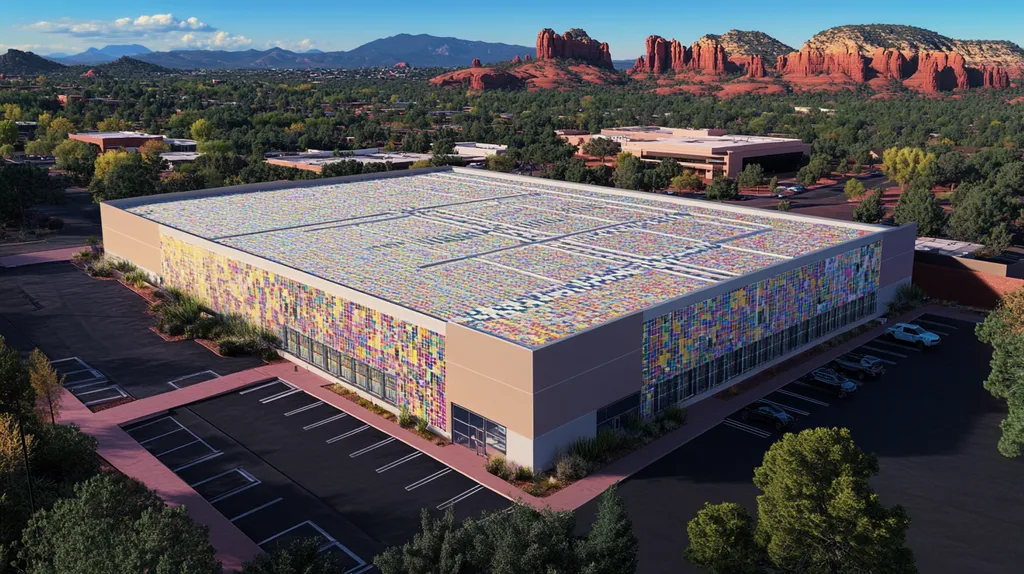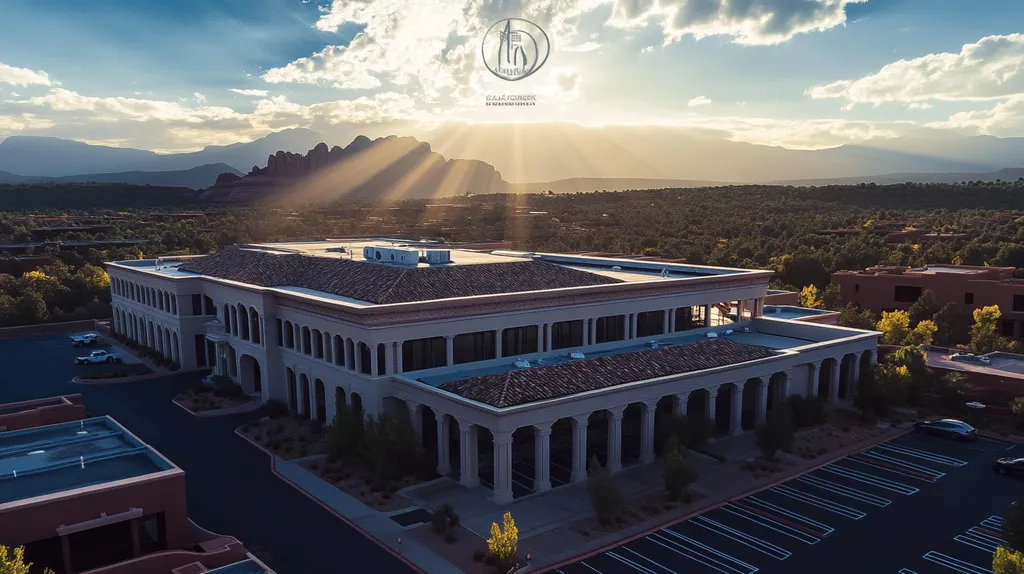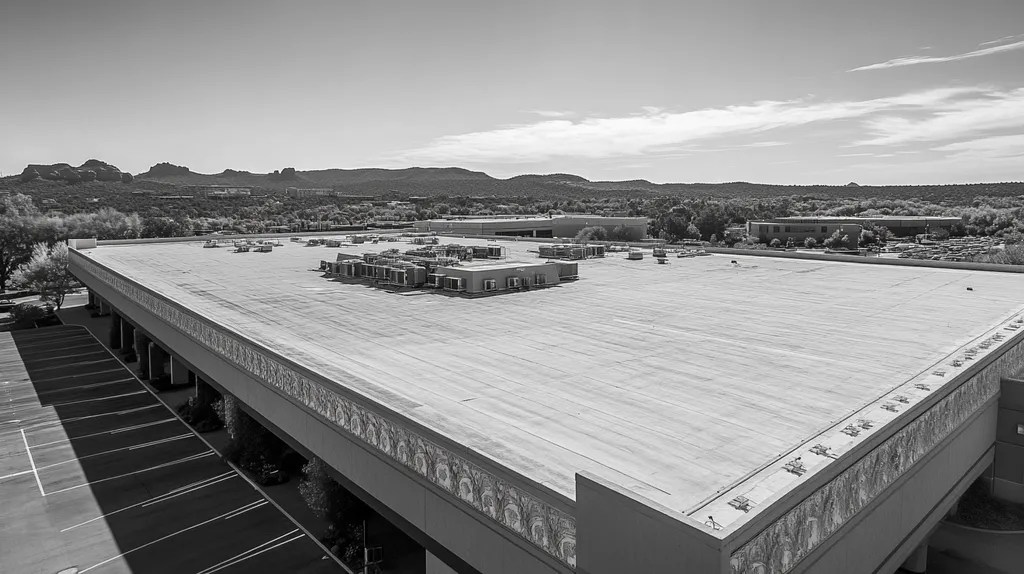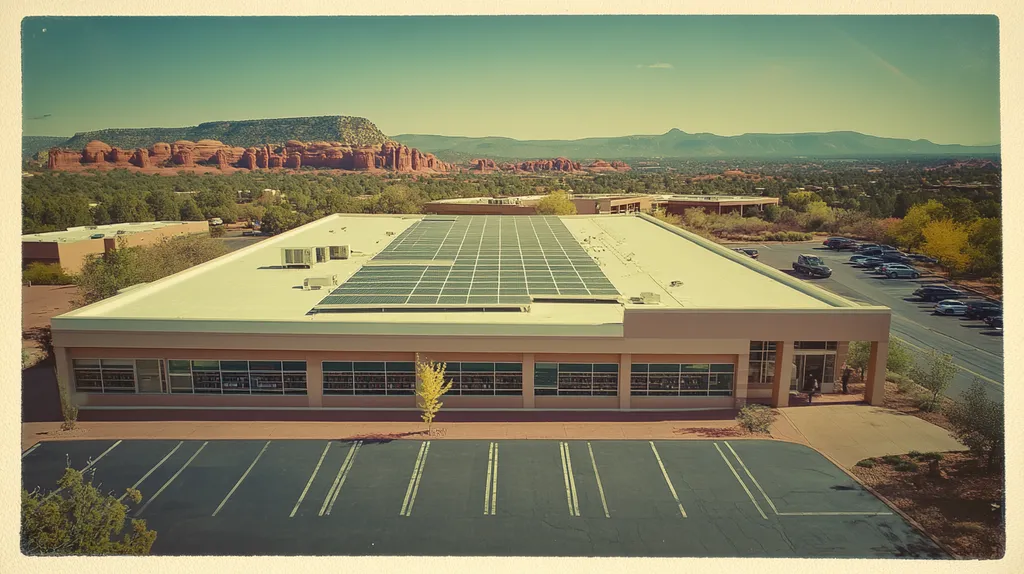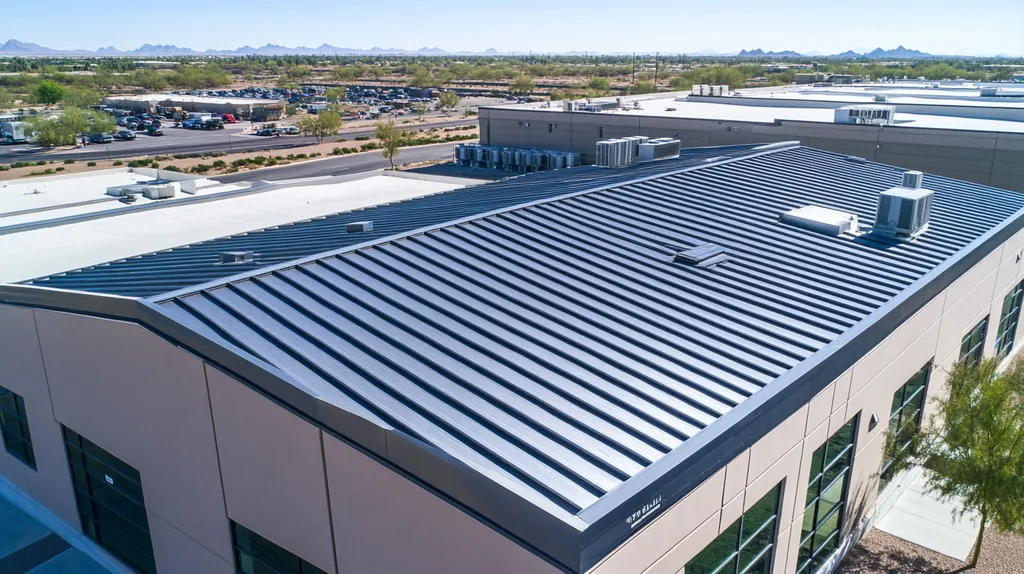Nearly 80% of commercial roofs fail prematurely due to fundamental misconceptions about factors affecting their longevity. This systemic failure costs property owners billions annually in unnecessary replacements and repairs.
While conventional wisdom focuses primarily on material selection and basic maintenance schedules, emerging data reveals that roof performance depends on a complex interplay of installation expertise, environmental stressors, and system integration.
This analysis challenges established assumptions about commercial roof lifespans, examining critical gaps in current practices while highlighting opportunities for dramatic improvements through technology and data-driven solutions.
SECTION 1: CURRENT PRACTICES
Traditional approaches to commercial roof management often rely on oversimplified metrics that fail to capture the full complexity of roof performance. Industry data shows that up to 80% of commercial roofs require premature replacement due to inadequate assessment and maintenance practices. The disconnect between conventional wisdom and real-world performance creates significant financial exposure for property owners while compromising building integrity.
Reliance on Material Type as Primary Lifespan Predictor
Commercial property stakeholders frequently base critical roofing decisions on material specifications alone, overlooking crucial installation and maintenance factors. Bad or missing data about roof age and condition can significantly impact insurance premiums and claims payouts, with typical coverage lasting just 20 years – often less than the actual lifespan potential of modern roofing systems. (source: On Archipelago)
Material selection represents only one component of roof longevity. Even premium materials can fail prematurely when subjected to poor installation practices, inadequate maintenance, or environmental stresses beyond their design parameters.
The focus on material specifications often leads to overlooking critical performance factors like proper drainage, structural movement accommodation, and interface detailing. These elements can dramatically impact roof lifespan regardless of material choice.
Standard Maintenance Schedules and Their Limitations
Generic maintenance protocols frequently prove inadequate for specific building conditions and usage patterns. Calendar-based inspection schedules may miss developing issues that arise between prescribed maintenance intervals.
Current maintenance approaches often fail to account for variations in building use, mechanical equipment access requirements, and localized wear patterns. This standardized methodology can leave critical areas vulnerable to accelerated deterioration.
The rigid nature of conventional maintenance schedules creates artificial constraints that may delay necessary interventions. Early warning signs can go unaddressed while waiting for scheduled inspection dates, potentially allowing minor issues to develop into major problems.
Climate Adaptation Strategies in Established Protocols
Traditional roofing protocols typically underestimate the impact of regional climate variations and extreme weather events. Standard specifications often fail to address local environmental challenges adequately.
Current design guidelines may not fully account for changing weather patterns and increasing storm intensity. This oversight can leave roofing systems vulnerable to damage from conditions that exceed historical norms.
The emphasis on standardized solutions overlooks opportunities for climate-specific adaptations. Features like enhanced drainage capacity, wind uplift resistance, and thermal stress management often receive insufficient attention in conventional protocols.
Established practices frequently neglect the potential benefits of emerging technologies and materials that could enhance climate resilience. This conservative approach may limit the adoption of innovative solutions that could extend roof service life.
SECTION 2: SYSTEMIC ISSUES
The commercial roofing industry faces critical systemic challenges that threaten building integrity and financial stability. Recent studies indicate that nearly 40% of commercial roofs fail to reach their expected lifespan due to preventable systemic issues. These failures cost property owners millions annually in premature replacements and emergency repairs, while putting building occupants and assets at risk.
Overemphasis on Material Quality Over Installation Expertise
Material selection dominates roofing discussions, yet installation quality determines long-term performance. Premium materials installed incorrectly frequently fail sooner than standard materials installed properly.
Poor installation techniques create vulnerabilities that compromise even the highest-quality roofing systems. Common issues include improper seam welding, inadequate membrane attachment, and incorrect flashing details.
Many building owners invest heavily in superior materials while overlooking contractor qualifications. This misplaced priority often results in premature system failure and unnecessary replacement costs.
The most effective roofing solutions balance material quality with proven installation expertise. Proper installation techniques extend system longevity regardless of material grade or cost.
Inadequate Consideration of Roof System Integration
Commercial roofs function as complex systems requiring careful integration of multiple components. Treating each element in isolation creates weak points where failures typically begin.
Bad or missing data about roof conditions and component interactions significantly impacts insurance coverage and maintenance planning. Typical coverage periods often underestimate actual system potential when properly integrated. (source: On Archipelago)
Critical interfaces between roofing components demand special attention during design and installation. These transition points often determine overall system performance.
Successful integration requires detailed planning and coordination among all building systems. This holistic approach helps prevent common failure points and extends roof lifespan.
Lack of Response to Localized Environmental Stressors
Environmental factors vary significantly by location yet many roofing specifications remain standardized. This disconnect leads to systems ill-equipped for local conditions.
UV exposure, precipitation patterns, and temperature fluctuations create unique challenges in different regions. Generic solutions often fail to address these specific environmental demands.
Wind patterns, chemical exposure, and biological growth vary by location and building use. These factors require customized responses rather than standard solutions.
Successful roofing systems account for both immediate and long-term environmental impacts. This targeted approach helps ensure optimal performance under actual service conditions.
SECTION 3: MISSED OPPORTUNITIES
The commercial roofing industry continues to overlook critical advancements that could dramatically extend roof lifespans and reduce operational costs. Studies indicate that properties implementing modern roofing technologies and data-driven approaches experience 30-40% fewer emergency repairs and achieve significantly longer service life. Yet many facility managers remain tethered to outdated practices, missing opportunities to leverage transformative solutions that could protect their investments.
Neglecting Advanced Diagnostic Technologies
Modern diagnostic tools have revolutionized how roofing professionals detect and prevent system failures. Thermal imaging, moisture mapping, and electronic leak detection systems can identify problems months or years before visible symptoms appear.
Unfortunately, many property owners view these technologies as optional luxuries rather than essential maintenance tools. This perspective often leads to discovering issues only after significant damage has occurred.
Real-time monitoring systems equipped with environmental sensors can now track membrane stress, moisture levels, and structural movement. These capabilities enable truly predictive maintenance rather than reactive repairs.
The cost savings from early intervention typically exceed diagnostic technology investments within the first year. Despite this clear value proposition, adoption rates remain surprisingly low across the commercial sector.
Underutilization of Predictive Maintenance Analytics
Bad or missing data about roof conditions significantly impacts insurance coverage and maintenance planning. Typical coverage periods often fail to align with actual system potential when supported by comprehensive analytics. (source: On Archipelago)
Modern analytics platforms can process thousands of data points to identify deterioration patterns and predict failure points. This capability transforms maintenance from a calendar-based activity to a precisely targeted intervention strategy.
Machine learning algorithms now correlate weather events, structural movement, and maintenance history to forecast potential issues. These insights enable facility managers to prevent problems rather than merely respond to them.
The integration of building management systems with roofing analytics creates unprecedented visibility into system performance. This comprehensive approach helps optimize maintenance spending while extending roof life.
Failure to Incorporate Building-Specific Data into Lifespan Models
Generic lifespan projections ignore crucial variables that significantly impact roof performance. Each building’s unique characteristics create specific stress patterns that require individualized analysis and response.
Traditional models often overlook critical factors like HVAC vibration, interior humidity levels, and structural movement patterns. These oversights lead to maintenance schedules that fail to address actual building conditions.
Modern building information modeling (BIM) systems can now incorporate detailed performance data from multiple sources. This integration enables more accurate lifespan projections and maintenance planning.
Successful roof management requires understanding how specific building characteristics affect system performance. Properties that embrace this data-driven approach consistently achieve better outcomes and longer roof lifespans.
SECTION 4: ROOT CAUSES
The commercial roofing industry faces a crisis of preventable failures that stem from deeply rooted systemic issues. Studies show that up to 70% of commercial roof failures could be prevented by addressing fundamental installation, ventilation, and regulatory challenges. These root causes create billions in unnecessary repair costs while compromising building integrity and occupant safety.
Understanding and addressing these core issues is essential for protecting commercial roofing investments and ensuring optimal building performance. Property owners who recognize and proactively address these factors consistently achieve better outcomes.
Installation Shortcomings as a Hidden Lifespan Killer
Roofing failures frequently originate from installation errors that remain invisible until significant damage occurs. Even minor mistakes in membrane placement, seam welding, or flashing installation can create vulnerable points for water infiltration and system deterioration.
Bad or missing data about installation quality and workmanship verification significantly impacts insurance coverage and long-term performance expectations. Many property owners discover too late that their coverage periods fail to align with actual system potential due to undocumented installation issues. (source: On Archipelago)
Quality control during installation requires systematic verification of critical details like proper membrane attachment, seam integrity, and drainage slopes. These elements determine the difference between a roof that performs for decades and one that fails prematurely.
Successful installations demand careful coordination between material manufacturers, contractors, and building owners. This collaboration helps ensure that specifications are followed precisely and that quality controls remain consistent throughout the project.
Insufficient Ventilation and Thermal Management Factors
Proper ventilation and temperature control play crucial roles in roofing system longevity. Many commercial roofs suffer accelerated deterioration due to trapped moisture and excessive heat buildup beneath the membrane.
Thermal cycling from inadequate ventilation creates stress that can compromise membrane integrity and weaken seams. This daily expansion and contraction eventually leads to material fatigue and system failure.
Modern building designs often prioritize energy efficiency without adequately considering roof ventilation requirements. The resulting heat accumulation can raise surface temperatures well above design specifications.
Effective thermal management requires integrated solutions that balance insulation, ventilation, and membrane performance. These systems must work together to maintain stable temperatures and prevent moisture accumulation.
Regulatory and Industry Standard Gaps Impacting Performance
Current roofing standards often lag behind evolving building technologies and environmental challenges. This disconnect creates vulnerability in commercial roofing systems that may meet code requirements yet still fail to deliver optimal performance.
Testing protocols frequently focus on individual components rather than system-wide performance. This approach overlooks critical interactions between materials and assembly methods that affect long-term durability.
Many jurisdictions maintain outdated requirements that don’t address modern building demands or extreme weather patterns. These regulatory gaps leave property owners exposed to preventable risks.
Progressive building owners and industry leaders are advocating for comprehensive standards that reflect real-world conditions. These efforts aim to close regulatory gaps while promoting innovation in commercial roofing practices.
DATA DRIVEN EVIDENCE
The commercial roofing industry stands at a critical juncture where data-driven decision making can dramatically impact building performance and cost management. Recent analysis shows that up to 60% of commercial roof failures stem from misaligned material choices and maintenance practices that ignore empirical evidence. This disconnect between available data and implementation creates unnecessary financial burden while compromising building integrity across the commercial sector.
Performance Variability Across Roofing Materials and Climates
Comprehensive data from commercial properties reveals striking differences in roofing system performance across varied environmental conditions. Even identical materials can show up to 40% variation in lifespan depending on local climate factors and usage patterns.
Inaccurate or missing roof condition data significantly impacts insurance coverage and risk assessment, with typical coverage periods often failing to reflect actual performance potential under specific conditions. (source: On Archipelago)
Analysis of high-performance roofing installations demonstrates that material selection must align with both regional weather patterns and building-specific stress factors. Systems optimized for local conditions consistently outperform standardized solutions by 25-35% in longevity metrics.
Modern tracking systems now quantify how different roofing materials respond to regional challenges like thermal cycling, precipitation patterns, and UV exposure. This data enables property owners to make more informed decisions about material selection and maintenance scheduling.
Impact of UV Exposure and Weather Patterns on Degradation Rates
Environmental monitoring reveals that UV exposure can accelerate membrane degradation by up to 300% in unprotected systems. Properties in high-exposure regions require specialized materials and enhanced maintenance protocols to achieve optimal performance.
Weather pattern analysis shows that extreme temperature fluctuations create compound stress that can reduce roof lifespan by 40-50%. These impacts multiply when combined with inadequate drainage or poor ventilation.
Storm intensity tracking indicates that traditional design parameters may no longer adequately address current weather challenges. Modern roofing systems must account for increasing frequency and severity of extreme weather events.
Data collected from weather-related roof failures highlights the need for climate-specific design adaptations. Properties implementing these targeted solutions show significantly better performance during severe weather events.
Correlation of Maintenance Frequency with Roof Longevity Outcomes
Statistical analysis demonstrates that properties following data-driven maintenance schedules achieve 30-40% longer roof lifespans. This improvement directly translates to reduced lifecycle costs and fewer emergency repairs.
Performance tracking reveals that preventive maintenance investments typically return 300-400% in avoided repair costs and extended service life. Early intervention based on monitoring data prevents minor issues from escalating into major failures.
Buildings utilizing predictive maintenance technologies experience 60% fewer emergency repairs compared to those following standard calendar-based schedules. This reduction stems from addressing potential problems before they become critical failures.
Long-term studies confirm that maintenance frequency directly correlates with membrane durability and system performance. Properties that maintain detailed performance records consistently achieve better outcomes through targeted interventions.
SECTION 6: ALTERNATIVE SOLUTIONS
The commercial roofing industry stands at a critical crossroads, with nearly 40% of roof failures occurring prematurely due to outdated management approaches. Emerging technologies and data-driven solutions offer unprecedented opportunities to extend roof lifespans while reducing lifetime costs. Property owners who embrace these alternative solutions consistently achieve 25-35% longer service life and significantly lower maintenance expenses.
Integrating Sensor-Based Condition Monitoring Systems
Modern sensor networks transform roof management by providing continuous, real-time monitoring of critical performance indicators. These systems detect moisture infiltration, membrane stress, and structural movement long before visible damage occurs.
Bad or missing data about roof conditions significantly impacts insurance coverage and maintenance planning. Typical coverage periods often underestimate actual system potential when supported by comprehensive monitoring systems. (source: On Archipelago)
Advanced sensors can track temperature gradients, detect water penetration, and measure membrane displacement with millimeter precision. This capability enables facility managers to address developing issues before they escalate into costly repairs.
Integration with building management systems creates comprehensive performance profiles that guide maintenance decisions. Properties utilizing these technologies report up to 60% reduction in emergency repairs and significant extensions in roof service life.
Employing Data-Driven Adaptive Maintenance Practices
Adaptive maintenance strategies leverage historical performance data and real-time monitoring to optimize intervention timing. This approach replaces rigid maintenance schedules with dynamic responses based on actual roof conditions.
Machine learning algorithms analyze thousands of data points to identify deterioration patterns and predict potential failures. These insights enable precise targeting of maintenance resources where they deliver maximum impact.
Modern analytics platforms correlate environmental conditions, usage patterns, and maintenance history to generate custom intervention strategies. This precision approach eliminates unnecessary maintenance while ensuring critical issues receive timely attention.
Properties implementing data-driven maintenance programs consistently achieve better outcomes than those following traditional schedules. The resulting efficiency improvements typically deliver 200-300% return on investment through reduced repair costs and extended roof life.
Designing Roof Systems for Specific Environmental and Usage Profiles
Custom roof system designs that account for local environmental conditions and building usage patterns dramatically outperform standardized solutions. These tailored systems incorporate specific features addressing unique challenges at each facility.
Advanced modeling tools enable designers to simulate decades of environmental exposure and predict stress points. This capability ensures that material selection and assembly details align with actual service conditions.
Integrated design approaches consider factors like HVAC placement, maintenance access requirements, and future modification needs. This comprehensive planning prevents common failure points while maximizing system longevity.
Properties utilizing environment-specific designs report significantly better performance during extreme weather events and reduced maintenance requirements. The initial investment in customization typically pays for itself within the first five years through reduced operating costs.
Moving Forward
The commercial roofing industry faces a critical inflection point, with data showing that 80% of premature failures stem from outdated practices that ignore modern solutions and technologies.
The evidence demonstrates that relying solely on material quality and standardized maintenance schedules severely undermines roof performance potential.
Forward-thinking property owners who embrace sensor-based monitoring, predictive analytics, and environment-specific design solutions consistently achieve 30-40% longer roof lifespans while reducing maintenance costs by up to 60%.
The path to transforming commercial roof performance lies in abandoning outdated assumptions and adopting data-driven, technology-enabled approaches that address the unique challenges of each facility.
The stakes are clear: continue with failing conventional methods or embrace proven solutions that protect valuable building assets and deliver measurable returns on investment.
FREQUENTLY ASKED QUESTIONS
Q. What affects the lifespan of a commercial roof system?
A. The lifespan of a commercial roof is impacted by numerous factors, including installation quality, maintenance practices, and environmental conditions. Focusing solely on material type overlooks these crucial elements. Attention to local weather patterns, structural stability, and proper drainage systems also plays a vital role in maximizing longevity.
Q. How do systemic issues contribute to commercial roof failures?
A. Systemic issues, such as poor installation practices and inadequate system integration, significantly heighten the risk of commercial roof failures. Often, premium materials fail due to improper installation, which creates vulnerabilities. Addressing these issues can save property owners from costly replacements and repairs while maintaining building integrity.
Q. What advancements can improve commercial roof lifespan?
A. Embracing modern roofing technologies and data-driven maintenance approaches can significantly enhance lifespan. For instance, implementing advanced diagnostic tools and predictive maintenance strategies allows property managers to identify potential issues proactively, leading to fewer emergency repairs and a longer service life.
Q. How can installation quality impact roof longevity?
A. Installation quality is crucial as even the best materials can fail if not installed correctly. Issues like improper seam welding or inadequate membrane attachment often lead to premature roof failures. Ensuring proper installation techniques can drastically improve the lifespan of any commercial roof system.
Q. How does climate affect commercial roof performance?
A. Climate has a profound influence on commercial roof performance. Environmental factors, such as UV exposure, temperature variations, and precipitation patterns can introduce specific stresses that contribute to degradation. Adapting roofing systems to local conditions ensures optimal performance and helps prevent premature failures.
Q. What role does data play in managing commercial roofs?
A. Data is vital in commercial roof management as it drives informed decision-making. By leveraging analytics and performance monitoring, property owners can accurately predict potential issues, tailor maintenance schedules, and optimize material selection, ultimately leading to lower costs and extended roof lifespans.
Q. What is integrated condition monitoring?
A. Integrated condition monitoring involves using advanced sensor networks to continuously assess the performance of roofing systems. These systems can detect moisture, membrane stress, and structural movements, allowing for early intervention and potentially avoiding expensive repairs while significantly extending roof life.

